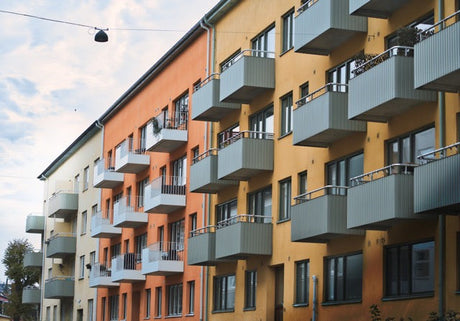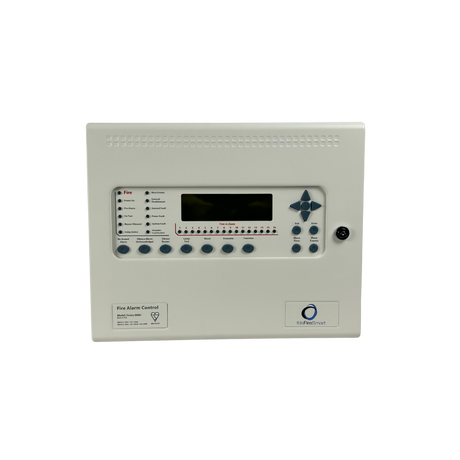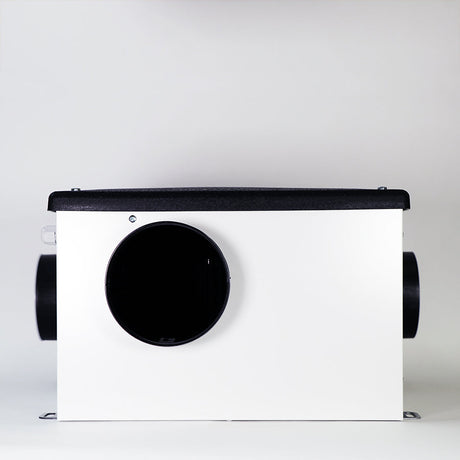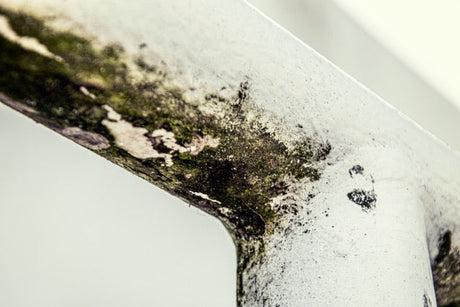Disclaimer: This document provides an outline of technical standards and typical requirements for natural smoke ventilation systems in UK residential buildings. It is intended as a general guide for buyers, designers, and contractors. It does not replace professional advice, project-specific fire engineering design, or consultation with building control authorities. Users must ensure that all designs, specifications, and installations are reviewed and approved by suitably qualified fire safety consultants, engineers, and the relevant statutory bodies. Statutory guidance, British Standards, and industry best practice documents are subject to updates. It is the responsibility of the buyer, designer, or Responsible Person to ensure they are working to the latest guidance and standards at the time of design and installation. Inbuild UK does not guarantee automatic updates to this document.
Natural smoke ventilation in flats and apartment buildings is there to keep common stairs and lobbies tenable long enough for escape and for the Fire and Rescue Service to get in. In practice, this usually means Automatic Opening Vents (AOVs) either directly to atmosphere or via a natural smoke shaft. Below is a practical, specifier-friendly guide that ties choices to today’s UK guidance and standards.
1) Start with the statutory baseline (England)
Approved Document B (ADB) Volume 1 sets the minimums for common corridors/lobbies and stairs in blocks of flats:
- Stair head AOV: provide an automatic opening vent at the top of the stair with ≥ 1.0 m² geometric free area, opening on smoke detection.
- Lobby/corridor ventilation – natural options:
- Direct to outside: a vent on an external wall with ≥ 1.5 m² free area, located as high as practicable and with its top edge at least as high as the stair door.
- Via a natural smoke shaft: a shaft ≥ 1.5 m² cross-section (min dimension 0.85 m) with vents (corridor → shaft, internal shaft grilles and roof outlet) each ≥ 1.0 m² free area.
2) Respect the product standards
An AOV used for smoke control is a NSHEV and should be tested and certified to BS EN 12101-2, with a Declaration of Performance (DoP) stating its aerodynamic free area (Aa) and classification. Power and controls should follow BS EN 12101-10.
3) Use the codes of practice for design detail
- BS 7346-8 gives the planning, design, installation, commissioning and maintenance framework for smoke control systems.
- The Smoke Control Association (SCA) guide adds practical design parameters and modelling/CFD advice.
4) BS 9991:2024 updates
The updated BS 9991 (Nov 2024) supplements ADB:
- Confirms a move away from external AOVs above 18 m; smoke shafts preferred.
- For buildings > 30 m, mechanical smoke control is recommended over natural shafts.
5) Choosing between natural options (with AOVs)
1) Single-stair, mid-rise block (≤ 18 m): natural solution acceptable.
2) Taller blocks (> 18 m to 30 m): prefer smoke shaft solution.
3) High-rise (> 30 m): plan for mechanical smoke control.
6) Specification checkpoints
1) Area proof: use DoP and check Aa ≥ requirements.
2) Vent height and placement: top edge ≥ stair door head.
3) Control philosophy: only fire-floor vent + stair head vent open.
4) Shaft details: check shaft area, vent areas, roof terminal height, materials.
5) Power & resilience: compliant power supplies and monitored controls.
7) Commissioning, handover and maintenance
Commission to BS 7346-8 and manufacturer’s EN 12101-2 test configuration. Record opening angles/times, cause-and-effect, and fail-safe operation. Plan periodic inspection/testing with records in line with SCA maintenance guidance.
Quick takeaway
For natural solutions in residential blocks, a compliant AOV strategy means: 1 m² geometric at stair head, 1.5 m² lobby AOV to outside or a 1.5 m² smoke shaft with 1 m² vents, with rigorous control logic and EN 12101-2-certified products. BS 9991:2024 shifts expectations: rely on shafts over façade vents above 18 m, and expect mechanical protection above 30 m.
8) Types of Smoke Control Vents Available on the Market
a) Natural/AOV (Automatic Opening Vent) Products
These rely on natural buoyancy and wind pressure to clear smoke. Common for residential blocks under ~18 m:
- Rooflights or windows designed as AOVs – open automatically upon smoke detection.
- Cupola (dome) vents, ridge vents, vertical hinged vents – available in different roof configurations.
Provide protection for stairwells (≥ 1 m² free area) and lobbies (≥ 1.5 m²).
b) Natural Smoke Shafts
Vertical shafts that vent smoke from corridors and stairs:
- Minimum shaft cross-sectional area of 1.5 m²; vents (corridor to shaft and shaft head) each ≥ 1.0 m².
- Constructed from non-combustible materials; vents typically rated to E30Sa.
- Designed so only the fire floor vent and stair head vent open together, other floors stay closed.
c) Mechanical Smoke Ventilation Systems
Used for taller or more complex buildings where natural systems are insufficient:
- Powered extract fans with dampers and shafts (which can be smaller than natural shafts).
- Usually supplemented with AOVs at stair heads for make-up air.
d) Pressurisation Systems
Maintain stair cores and/or lobbies smoke-free via over-pressure rather than venting:
- Fans supply air under pressure; smoke exits via relief vents or ducts.
- Typically used in high-rise applications.
9) Buyer’s Design Standards & Selection Checklist
1) Certification & Regulatory Compliance:
- All vents should be tested and certified to BS EN 12101-2, with a valid Declaration of Performance (DoP).
2) Free Area Requirements:
- Stairs ≥ 1 m² geometric free area; lobbies ≥ 1.5 m² free area; shafts ≥ 1.5 m² cross-section.
3) Fire Resistance & Materials:
- Shafts must be non-combustible; vents E30Sa-rated where required.
4) Activation & Control Logic:
- Only fire floor vent plus stair head vent should open upon activation.
5) Design Documentation:
- Fire strategies should reference ADB, BS 7346-8, BS 9991, and the DoPs of chosen products.
6) Power Supplies & Control Panels:
- Systems should comply with BS EN 12101-10.
7) Maintenance Obligations:
- Responsible Persons must maintain and service systems regularly, as required under UK regulations.
10) How Inbuild UK Supports Buyers
Inbuild UK provide a one-stop solution for compliant smoke ventilation systems:
- Wide product range: AOVs (cupolas, ridge, window units), natural smoke shaft components, mechanical fans, dampers, actuators, and certified control panels.
- Pre-configured kits: packages that simplify design and installation, e.g., stairwell kits with certified vents or natural shaft damper sets.
- Technical guidance: support for designers and contractors to select the right combination of products per project requirements.
- Rapid supply: fast dispatch of stocked items reduces project delays.
- Compliance assurance: all products are tested and certified to the relevant standards, with DoPs available.
11) Buyer’s Decision Flow Chart
The following flow chart provides a quick reference for choosing the correct type of smoke ventilation system based on building height and complexity:
START → Determine building type and height
↓
Is building ≤ 18 m?
→ YES: Use Natural Ventilation (AOVs or Smoke Shaft)
→ NO:
↓
Is building > 18 m and ≤ 30 m?
→ YES: Prefer Smoke Shaft solutions (natural or mechanical)
→ NO:
↓
Is building > 30 m?
→ YES: Use Mechanical Smoke Control or Pressurisation system
→ END
12) Skylights as AOV Smoke Vents
Skylights installed on the top floor or roof can be designed and certified to act as Automatic Opening Vents (AOVs). They are a common solution for stairwells in residential buildings where direct roof access is possible. When used in this way, skylights must comply with the same performance and certification standards as other smoke vents:
- Certification: Skylights must be tested and certified to BS EN 12101-2 as Natural Smoke and Heat Exhaust Vents (NSHEVs).
- Declaration of Performance (DoP): A valid DoP must confirm the aerodynamic free area (Aa) achieved when fully open.
- Free Area: For stair head ventilation, the skylight must achieve ≥ 1.0 m² geometric free area as required by Approved Document B.
- Reliability Testing: Units must pass EN 12101-2 testing for repeated opening/closing cycles, snow load, wind load, and low temperature operation.
- Installation: The skylight must be installed in accordance with the tested configuration (actuators, opening angle, frame construction) to ensure compliance.
- Fire Service Override: As with other AOVs, skylights must be connected to the control system and allow manual override by the Fire and Rescue Service.
- Material Standards: Glazing and frame systems should be non-combustible or fire-rated where required, and suitable for external weathering while maintaining performance.
By specifying roof skylights as certified AOVs, designers can provide compliant smoke ventilation at the head of stairs while also allowing natural light into common escape routes. Buyers should ensure any skylight product supplied for smoke control comes with EN 12101-2 certification, a Declaration of Performance, and installation details matching the tested system.
13) Example Specification Wording for Skylight AOVs
The following sample text can be adapted into project specifications to ensure clarity and compliance when specifying skylights as AOV smoke vents:
Roof Skylight Automatic Opening Vent (AOV)
- Provide and install a roof-mounted skylight certified to BS EN 12101-2 as a Natural Smoke and Heat Exhaust Vent (NSHEV).
- The unit shall achieve a minimum of 1.0 m² geometric free area in accordance with Approved Document B for stair head ventilation.
- The aerodynamic free area (Aa) shall be declared within the manufacturer’s EN 12101-2 Declaration of Performance (DoP) and submitted for approval.
- The skylight shall be fitted with an actuator capable of opening to the tested angle within 60 seconds of activation.
- Operation shall be automatic on smoke detection and manual via local fire service override switch.
- The product shall be installed strictly in accordance with the tested configuration, including frame type, actuator, and glazing details.
- Glazing and frame materials shall be suitable for external installation and meet all durability and weather resistance standards.
- The system shall be connected to the smoke control panel and power supply in compliance with BS EN 12101-10.
- Maintenance requirements, including routine testing and servicing, shall be provided by the supplier.
14) Compliance Checklist for Natural Smoke Ventilation System
The following checklist table covers the key components of a natural smoke ventilation system, the relevant design standards, and the certificates or documentation that should be obtained. This can be used at design stage, procurement, or during commissioning to ensure compliance.
|
Product / Component |
Design Standard |
Certification / Documentation |
Compliant (Y/N) |
|
Automatic Opening Vent (AOV) – Stair Head |
BS EN 12101-2; ADB Vol 1 |
Declaration of Performance (DoP) showing ≥1.0 m² geometric free area and aerodynamic free area (Aa) |
|
|
Automatic Opening Vent (AOV) – Lobby/ Corridor |
BS EN 12101-2; ADB Vol 1 |
DoP showing ≥1.5 m² free area (direct) or ≥1.0 m² (into shaft) |
|
|
Natural Smoke Shaft |
ADB Vol 1; BS 7346-8 |
Design drawings showing ≥1.5 m² cross-section, non-combustible materials, E30Sa-rated shaft doors/dampers |
|
|
Smoke Control Dampers (if used in shafts) |
BS EN 12101-8 |
DoP and CE/UKCA marking |
|
|
Control Panels & Actuators |
BS EN 12101-10 |
Manufacturer test certificates; wiring diagrams; fail-safe proof |
|
|
Power Supply & Backup |
BS EN 12101-10 |
Certification of compliant battery backup and monitored system |
|
|
Detectors & Interface with Fire Alarm |
BS EN 54 series; BS 7346-8 |
Commissioning certificates; cause-and-effect matrix |
|
|
Fire Service Override Switches |
BS 7346-8; ADB guidance |
Functional test certificates |
|
|
Skylight AOV (if used) |
BS EN 12101-2; ADB Vol 1 |
DoP confirming ≥1.0 m² geometric free area and aerodynamic free area (Aa) |
|
|
Installation & Commissioning Records |
BS 7346-8 |
Commissioning sheets; opening time tests; service manuals |
|
|
Maintenance Programme |
BS 7346-8; RRO 2005 |
Planned maintenance schedule and logbook |
|
|
Smoke Control Panels |
BS EN 12101-9; BS EN 12101-10; BS 7346-8 |
Declaration of Performance (DoP); UKCA/CE marking; commissioning certificates; cause-and-effect documentation |
|
15) Smoke Control Panels in Natural Smoke Ventilation Systems
Smoke control panels are the control centre of a natural smoke ventilation system. They receive inputs from smoke detectors and manual overrides, and control actuators, dampers, and fans. Their reliability is essential as they must operate in fire conditions when other building systems may fail.
Types of Smoke Control Panels:
- Single-zone panels: control one AOV (e.g., a stair head skylight vent).
- Multi-zone panels: operate multiple AOVs across stairs and lobbies with cause-and-effect logic.
- Networked panels: addressable systems for larger or more complex schemes, often integrated with fire alarm and BMS.
- Hybrid panels: manage natural AOVs alongside mechanical fans or shafts.
Relevant Standards and Compliance:
- BS EN 12101-9: Specifies design, performance, reliability, and safety for smoke control panels.
- BS EN 12101-10: Covers power supplies, including mains + battery backup.
- BS 7346-8: Code of practice for smoke control systems, requiring proper commissioning and documentation.
- Construction Products Regulation (CPR): Panels must be UKCA/CE marked with a Declaration of Performance (DoP).
- EN 54 compatibility: Panels integrating directly with fire alarm systems must align with EN 54 series standards.
Functional Requirements:
- Automatic actuation on smoke detection.
- Manual firefighter override switches.
- Fail-safe opening on power loss.
- Monitoring of actuators, wiring, and battery.
- Event indication (fire, fault, power, override).
- Priority logic ensuring fire input overrides all other signals.
Buyers should ensure smoke control panels are supplied with a DoP certificate, evidence of EN 12101-9 and EN 12101-10 compliance, and documented cause-and-effect programming. Inbuild UK can supply certified panels suitable for AOV-only systems, multi-zone shafts, or hybrid natural/mechanical solutions.
One-Page Buyer’s Guide: Natural Smoke Ventilation Systems
This quick reference guide summarises the essential components, standards, and compliance requirements for natural smoke ventilation systems in UK residential projects.
|
Component |
Key Requirement |
Relevant Standards |
|
Stair Head AOV |
≥1.0 m² geometric free area; automatic on smoke detection; manual override |
ADB Vol 1; BS EN 12101-2 |
|
Lobby/ Corridor AOV |
≥1.5 m² free area (direct to outside) OR ≥1.0 m² into smoke shaft |
ADB Vol 1; BS EN 12101-2 |
|
Natural Smoke Shaft |
≥1.5 m² cross-section; vents ≥1.0 m²; E30Sa-rated doors/dampers |
ADB Vol 1; BS 7346-8 |
|
Skylight AOV |
Certified as NSHEV; DoP confirming ≥1.0 m² geometric free area; suitable actuator |
BS EN 12101-2; ADB Vol 1 |
|
Smoke Control Panels |
Automatic + manual operation; fail-safe; monitored; battery backup |
BS EN 12101-9; BS EN 12101-10; BS 7346-8 |
|
Power Supply |
Mains + standby battery (72 hrs standby + 1 full vent cycle) |
BS EN 12101-10 |
|
Actuators & Dampers |
Certified operation; fail-safe open/close; tested with vent system |
BS EN 12101-2; BS EN 12101-8 |
|
Fire Service Overrides |
Accessible at stair/lobby; priority to stair head vent |
ADB Vol 1; BS 7346-8 |
|
Maintenance & Records |
Planned servicing; functional tests; logbook kept on site |
BS 7346-8; RRO 2005 |
✅ Inbuild UK supplies certified AOVs, skylight vents, smoke shafts, control panels, actuators, and dampers. All products are compliant with the relevant EN standards and supplied with Declarations of Performance (DoPs).





